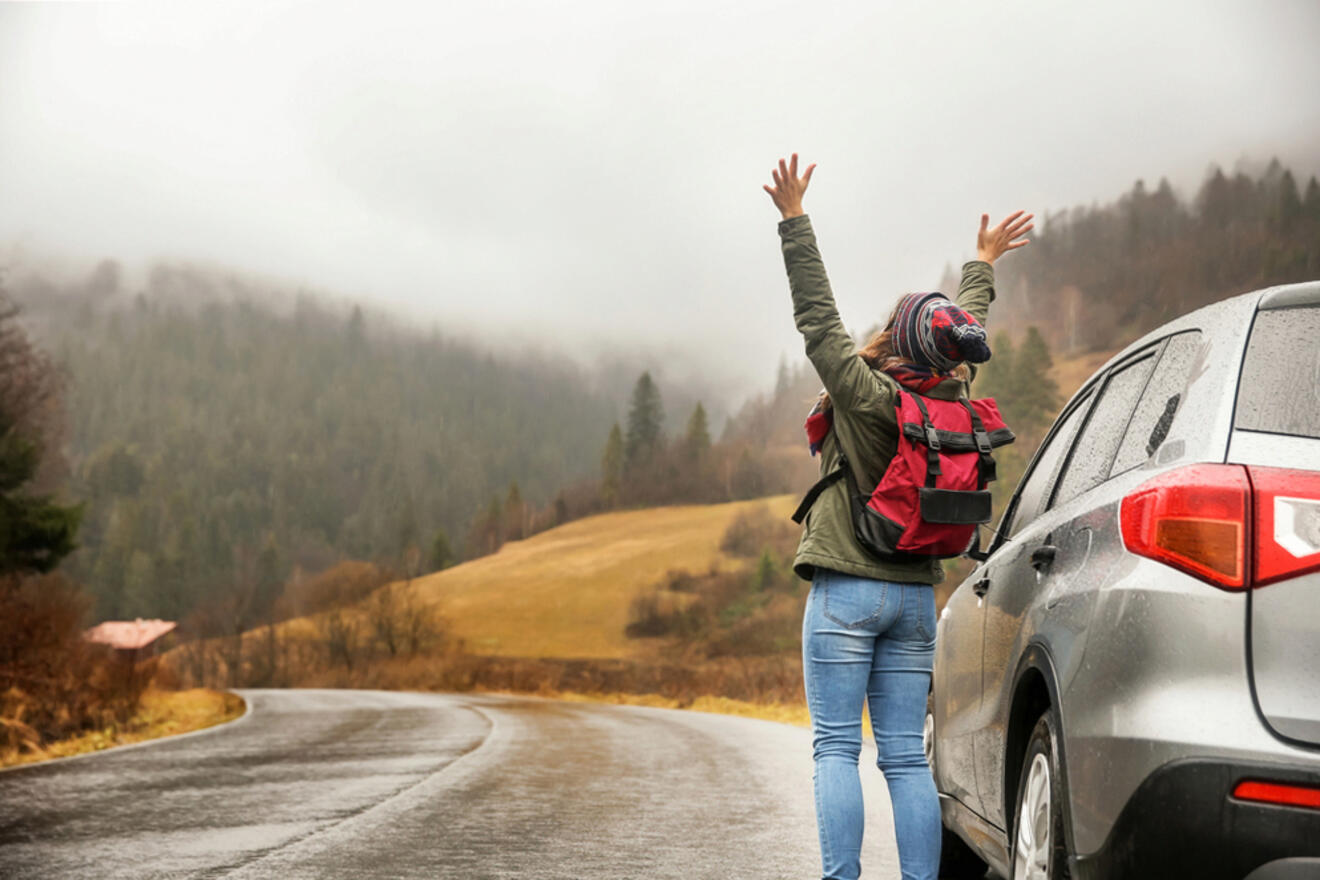
Renting a car in Ireland is one of the best decisions you’ll make when planning a trip to this beautiful country! I recently visited Ireland with a rental car, and let me tell you right away—it can save you so much time, energy, AND money if you choose wisely! Plus, it’s the best way to explore all the beauties of Ireland at your own pace!
In this guide, I share everything you need to know about renting a car in Ireland. I’ve rented a car here myself, read the laws, and checked all the car rental companies and their reviews – I’m here to share all the juice with you!
Contents
- 1. Prices for renting a car in Ireland
- 2. How to choose the best car for you
- 3. Road tolls and fines
- 4. Parking rules and prices
- 5. Additional fees when renting a car in Ireland
- 6. Road quality in Ireland
- 7. Apps that people use to help navigate
- 8. Things to check when you receive your rental car
- 9. Campervan hire in Ireland
- FAQs about renting a car in Ireland
- Conclusion
| Age | From 25 |
| Documents needed | Valid driver’s license, credit card |
| Driving license requirements | In English, no international license needed |
| Speed limit | 120 km/h motorways, 100 km/h national roads, 80 km/h regional roads, and 50 km/h urban areas |
| Which side of the road | Left |
| Children rules | Car seat or booster seat mandatory for kids under 12 |
| Where to book | Compare prices here |
1. Prices for renting a car in Ireland

If you decide to rent a car in Ireland like me, you’re probably starting off by calculating the price. Although the prices have gone up in recent years, and they keep rising, you can still find good rentals in Ireland that won’t break the bank.
When you add in gas and insurance and pretty much all fees, you can expect to pay around €400 for 7 days for an average small or midsize car. I rented for 8 days (a lovely hybrid Toyota Yaris, automatic) and paid just short of €400 for 8 days in February, although I did get a discount for using my British Airways Avios (reward miles for frequent travelers). My care rental booking also included an additional driver.
1.1. Prices by car type
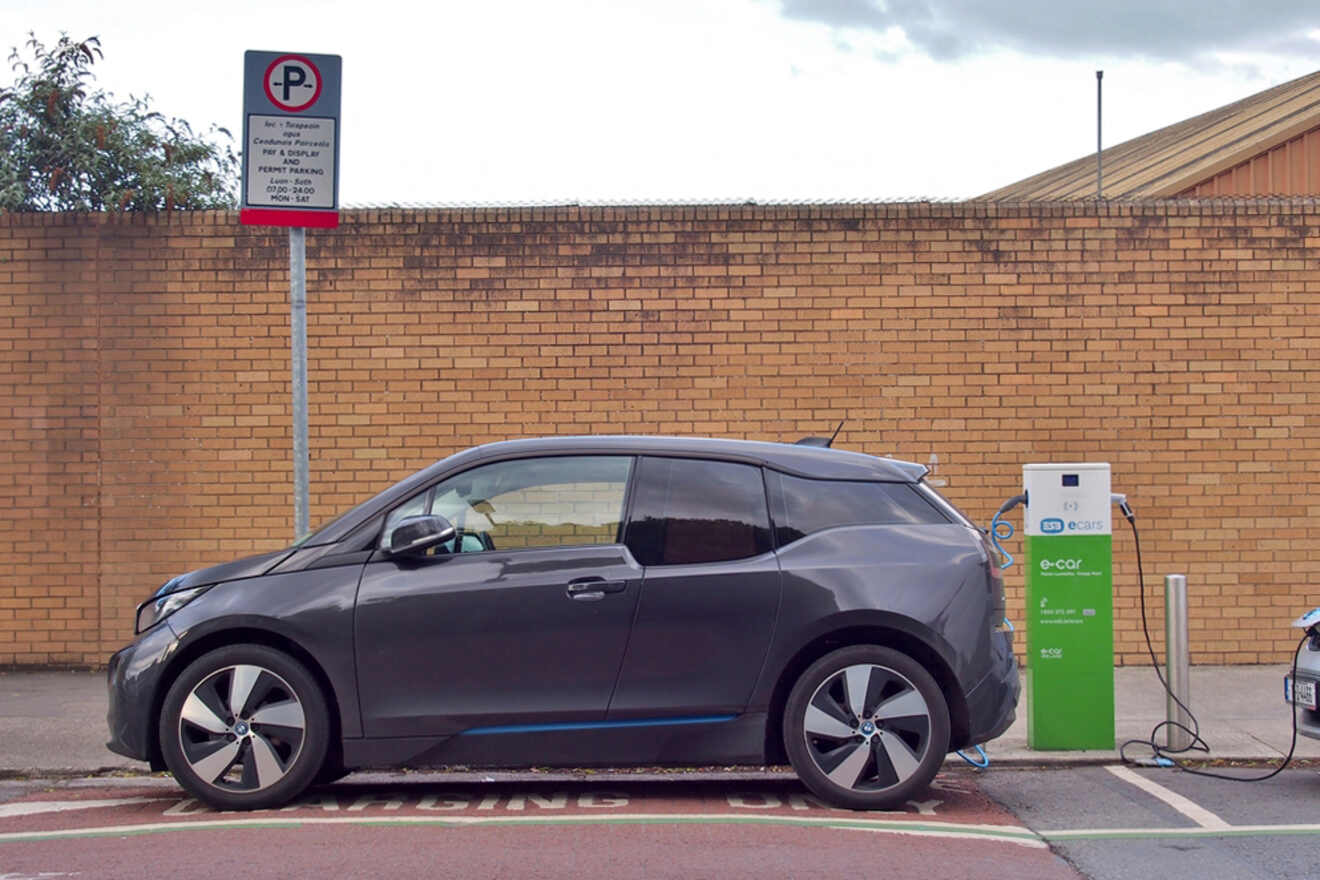
The price of the car rental can vary dramatically depending on the season. June to August is the high season for rentals, and this is when the prices can be even 40% higher. Of course, the price will also change according to the car type.
Below, I give a short overview of the average prices per day per car type during the low season (September – May, first price) and during the high season (June – August, second price).
- Small cars (Toyota Aygo X, Renault Clio): €20 – €75
- Mid-size cars (Hyundai i30, Ford Focus): €25 – €80
- Large cars (Open Insignia, Toyota Corolla): €40 – €120
- SUVs (Hyundai Tucson, Nissan Qashqai): €30 – €150
Where to rent? I researched and compared prices many times, and it is usually cheaper to rent with RentalCars. I also often check AutoEurope, which offers significant savings.
You may feel like it’s safer to look directly at a car company’s website, but let me tell you right away – you can get much better deals by researching comparison or aggregator sites! Below are just a few reasons why I recommend comparison sites:
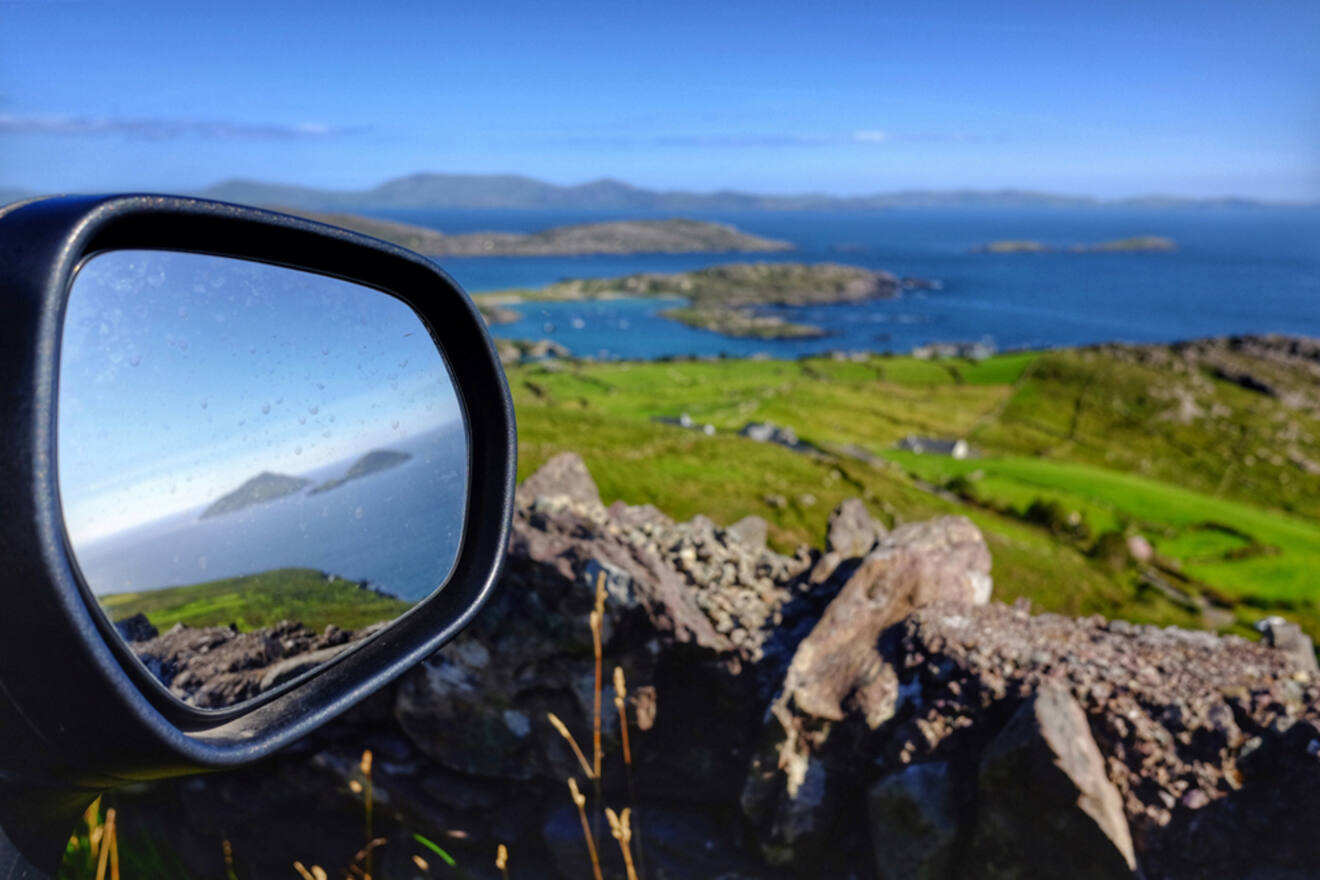
- Cheaper price. Most of the time, they offer cheaper prices. Local car rental companies can purposely set more expensive pricing because you can’t see the market fare price. So, if you’re looking for cheap rental cars, start from aggregator websites!
- Match pricing. Site aggregators like RentalCars will match the price if you find a lower one elsewhere for your Ireland rental car.
- Flexibility. Most sites allow you to cancel or change your booking up to 48 hours prior to arrival for free.
- Transparency. Comparison sites will tell you the exact car rental price, unlike car rental providers that may purposely hide some costs.
- Comfort. You get to see results from dozens of car rental companies immediately, so you don’t have to check each site or visit their offices in the city. You can select the best deal faster!
NOTE: You will still need to sign a rental agreement with a rental company when booking through agencies, brokers, or any other third party.
How to save on car rental in Ireland:
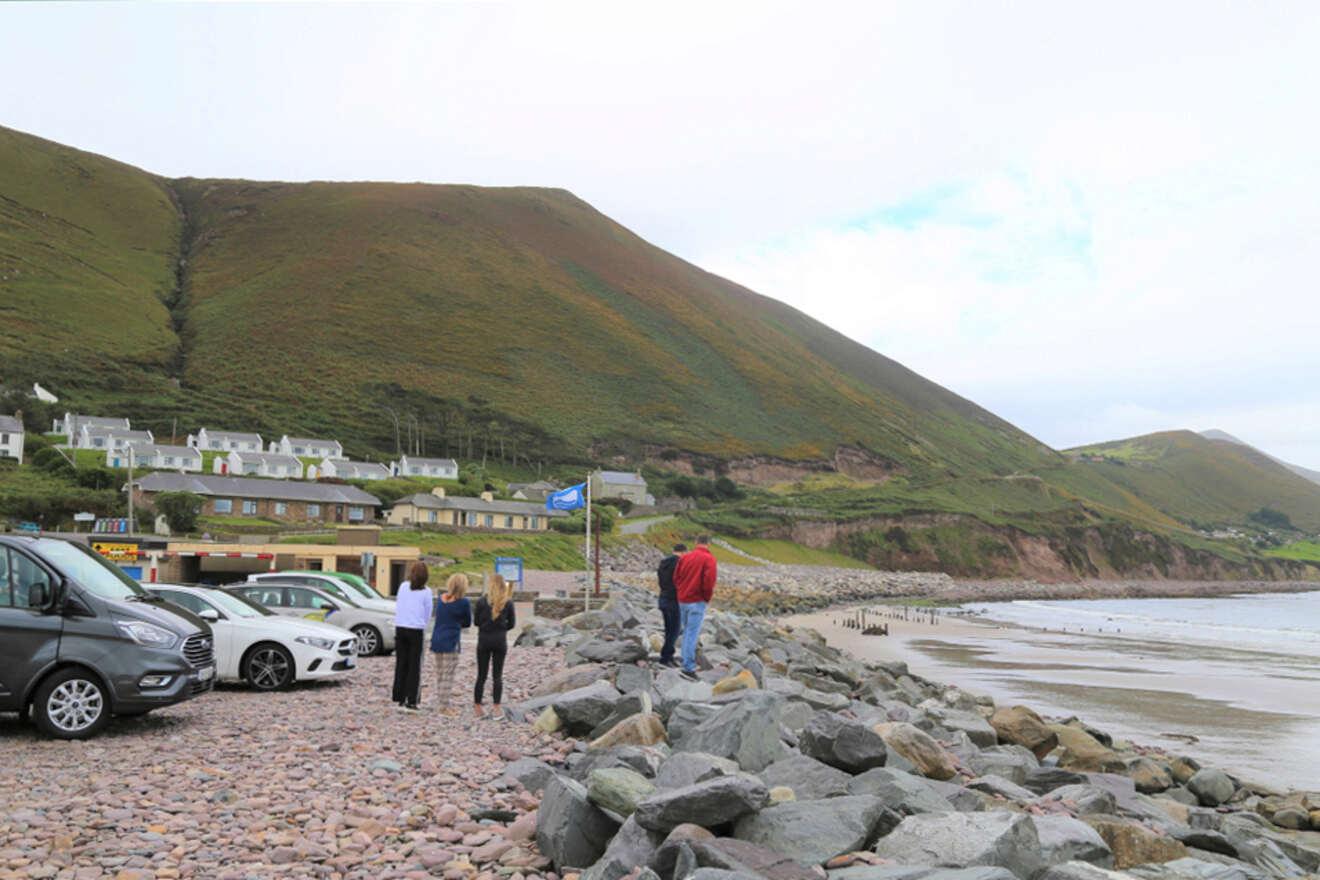
- Book as much in advance as you can. This also means planning your trip ahead and knowing for which dates you’ll need the car rental (for exploring natural beauty, regional attractions, castles, etc). I booked nearly 2 months before renting!
- Book for a longer period, but be mindful to only book for the dates you’ll actually be using the car. I don’t recommend renting for major cities, notably Dublin and Belfast, because parking can be a mess and traffic is hectic. Plus, those cities are super walkable and have great public transportation
- Go in a shoulder season (between peak and off-peak)
- Compare the prices for pickups at different locations – it may just so be much cheaper to pick up your car from the city center vs. at the airport or in a nearby city. I decided to pick up at the airport so I didn’t have to worry about finding a taxi to where I was staying.
1.2 Gas prices
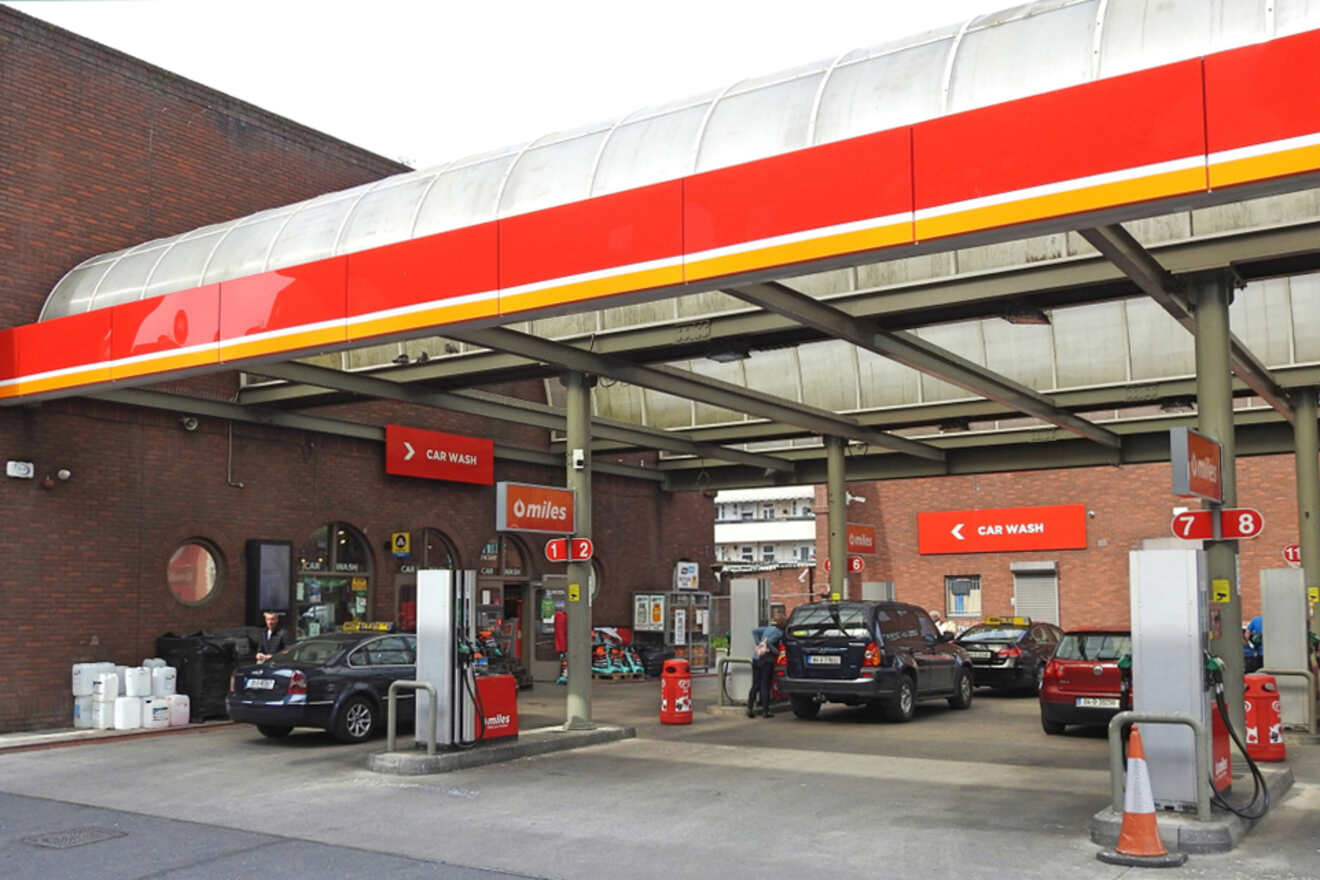
You can check current gas prices on pumps.ie. They update the prices daily. You can also see the prices on a digital board when you drive by or enter the station.
We used Circle K and Applegreen gas stations, and both were good; there were quite a few of them on the highway. If you’re planning a longer trip, I recommend you research beforehand where you can find gas stations on your route so you can plan when to stop.
We paid with a card; from my experience, all gas stations take cards. In some places you will need to swipe your card at the pump, while at other places, you’ll need to pay inside.
Note that the car rental in Ireland already comes with a full tank, but you’ll need to make sure you fill up your car before you send it back. Otherwise, you won’t get your deposit back (and the deposit is much higher than it actually costs to fill up!). In my case, the fuel deposit was €108, but the actual cost of filling the car was about €50.
There’s a Circle K (map) close to Dublin Airport. Many car rental companies in Ireland, like Avis or Budget, have fuel stations at the drop-off, but we didn’t use those. I can imagine they are a lot more expensive!
1.3 Car rental insurance prices

Ireland car rental insurance can be a bit tricky in a way that you most likely won’t be allowed to rent a car unless you paid for some form of excess protection insurance. The insurance for the car I rented was around €30 per day. I decided to go for a more comprehensive insurance plan since the basic plan included an excess of €2,000. And I wasn’t willing to take the risk. The price is more or less the same for most rental companies.
Overall, road quality in the Emerald Isle is good, but sometimes it can get too tight, and actually, many rental cars here are returned with some form of minor scratches or mirror swipes. This didn’t happen to me, but as I was researching for this article, I was surprised to see that small accidents can happen quite often when you use small regional roads.
That’s why it’s best to get car rental insurance. You have third party liability insurance, CDW (collision damage waiver), and SCDW (super collision damage waiver) car rental insurance in Ireland.
Limited liability insurance in Ireland is mandatory by law, but it only covers the damage made to another person’s car if you were at fault, and it doesn’t cover damage done to your vehicle. Some companies will list this one as CDW and include it in the price, but it’s still not considered SCDW.
The SCDW insurance limits your financial obligations in case of damage to the vehicle as long as you didn’t break any of the conditions (drinking and driving, using drugs, etc, check the small print for details). It also doesn’t cover if you put the wrong fuel in the car.
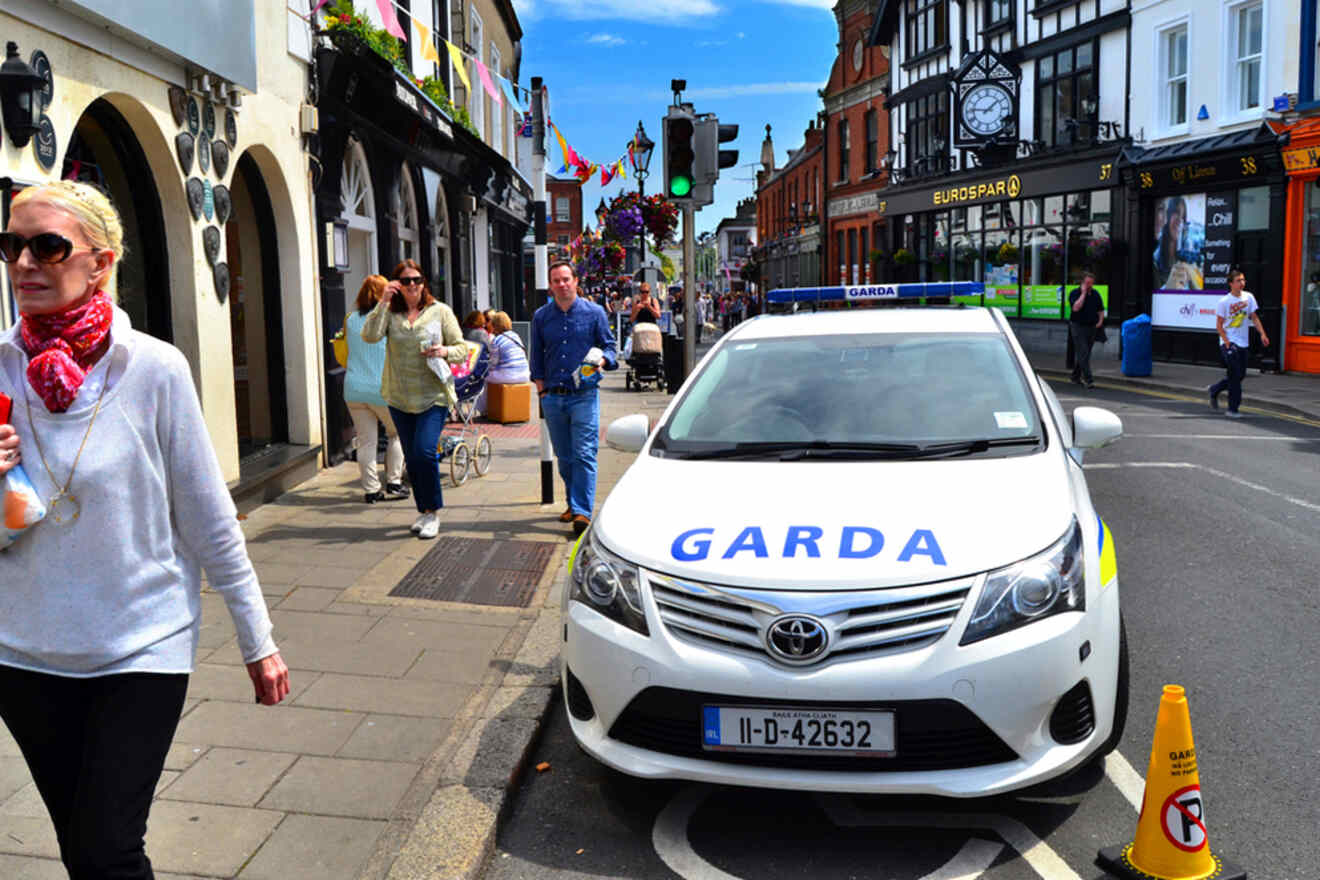
I recommend you get extra insurance (SCDW) right away because nothing is worth the risk, and you don’t want to pay more for it at the counter.
Auto Europe and Irish Car Rentals (one of the best car rental companies in Ireland) let you pre-purchase CDW.
If you don’t want to pay for excess insurance coverage, the car hire company will place a hold on your credit card (from €2,000 to €7,000 based on car type, rental specs, etc).
Also, all of these rental rates most often include theft insurance, so you don’t have to purchase that one separately.
NOTE: If you plan to use your credit card insurance, Irish car hire companies can charge you an admin fee that can be from a few euros to up to €30. Check out the credit card insurance policies in fine print to be sure it actually covers Ireland!
2. How to choose the best car for you
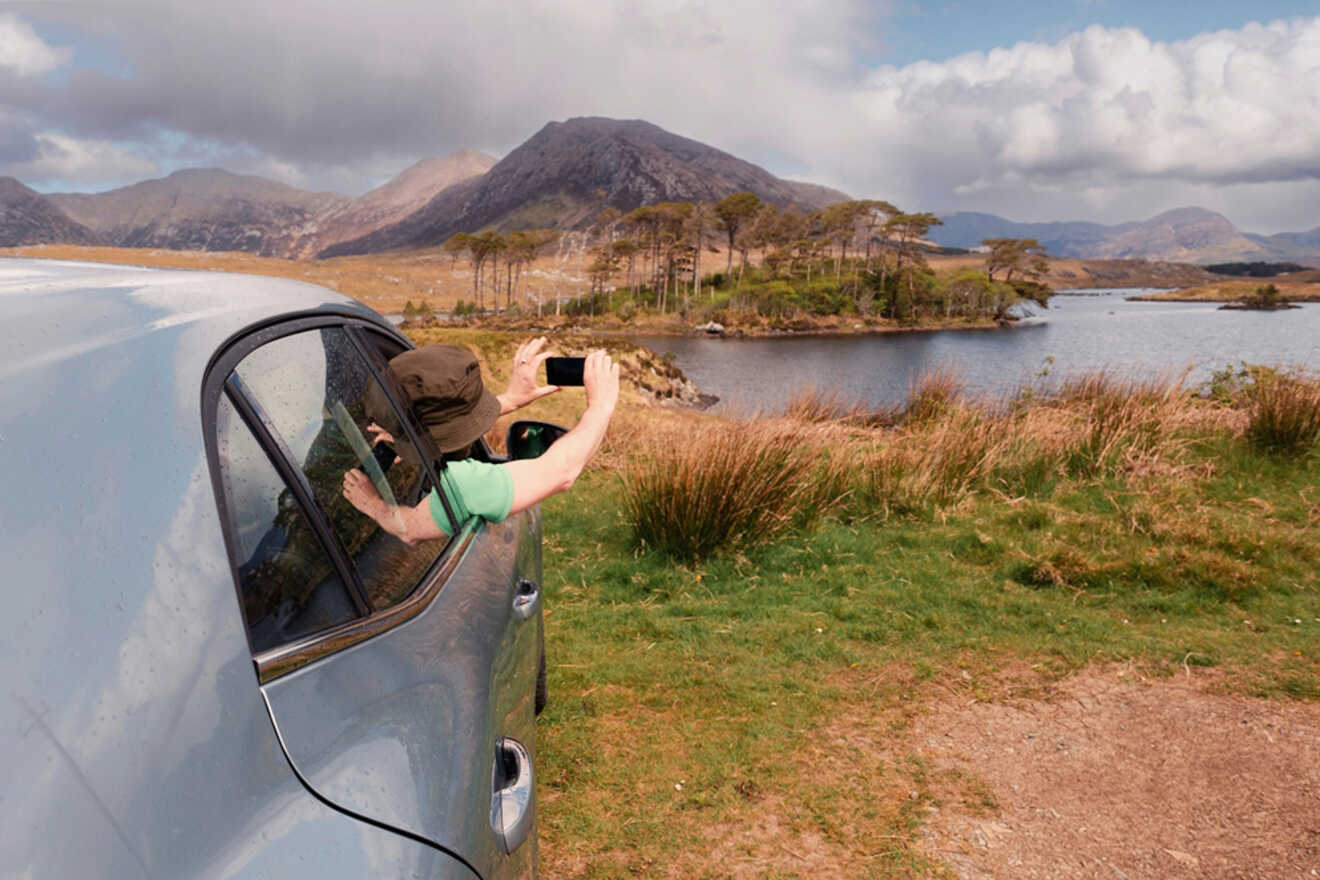
The type of car hire you choose depends on your budget, the number of people traveling, the size of your suitcases, your previous experience with cars, and, of course, the nature of your trip.
Here’s a small car size comparison list with short explanations of the car’s features so you can find the one that matches your needs best:
- Small: 4 seats, 1 large and 1 small bag, for city trips and solo travelers
- Mid-size: 5 seats, 1 large and 1 small bag, for short journeys, small families
- Large: 5 seats, 2 large bags, for families and longer trips
- SUV: 5 seats, 3 large bags, for large families, groups
So, consider whether you’ll have a lot of bags (the fewer, the better for Ireland), but also other technical details like whether you prefer a car with a manual transmission or an automatic transmission, extra features like GPS or cruise control (great if you plan long trips), unlimited mileage, etc.
I said the fewer the bags, the better for Ireland, because you want to choose the smallest possible car. This, of course, doesn’t mean that you should compromise on comfort. But I already mentioned, the roads in Ireland can get super narrow, so you want your ride to be as smooth as possible. Aim for the smallest vehicle that you’ll feel comfortable in! In my case, I chose a smaller car since I was only traveling with one other person. We managed to fit one big suitcase in the trunk and another on the back seat.
NOTE: Some people recommend getting a GPS; some people recommend using your mobile phone’s navigation app as a guide. My rental had an Apple CarPlay, so we could connect a data transfer cable to it, and the GPS from my phone would go straight to the screen. No need for phone holders!
3. Road tolls and fines
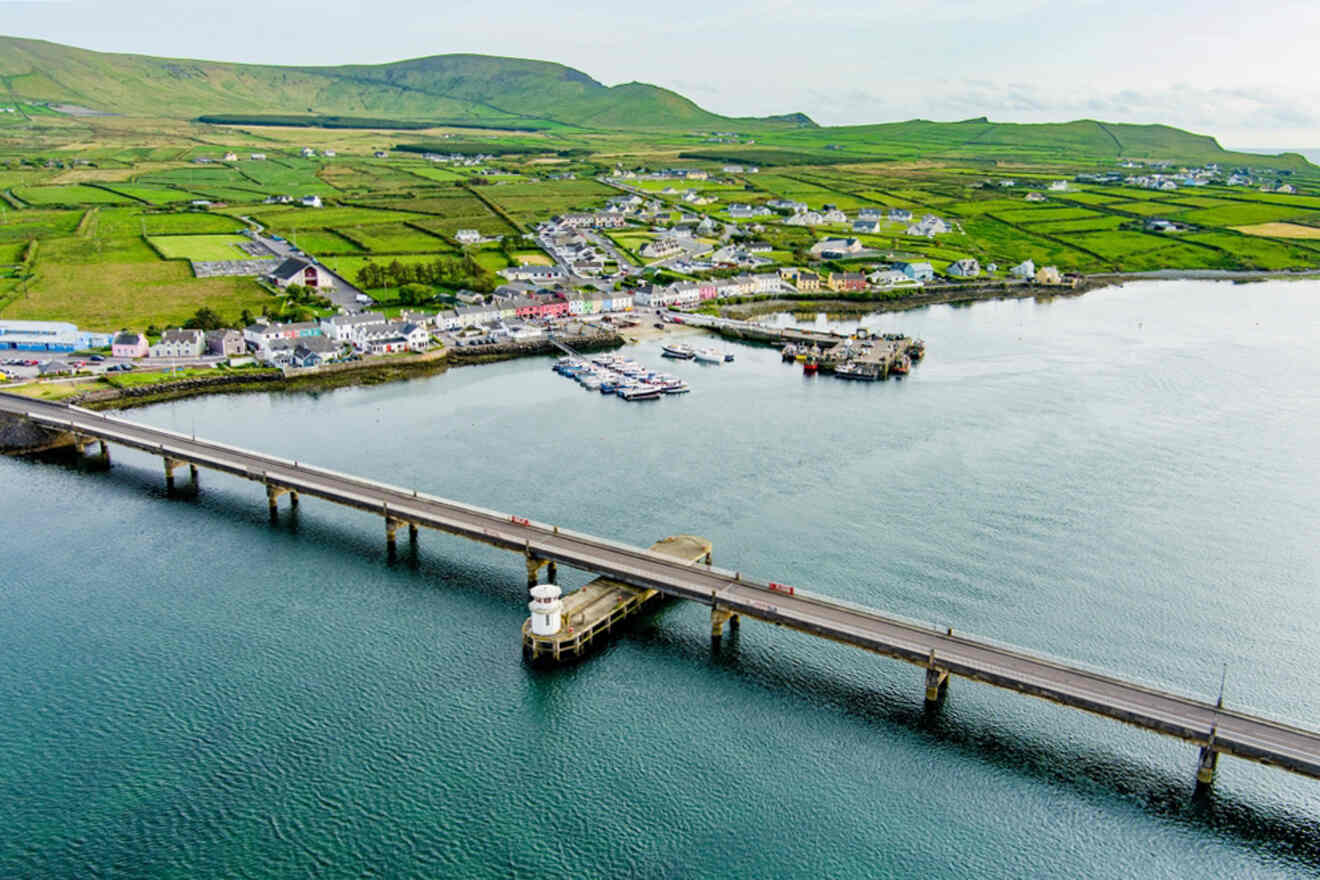
Highways in Ireland have tolls, and the average fee is about €3. You can pay by card or by cash, with the eFlow being the only exception for the airport road (M50). For this one, you need to log onto the website and pay the toll before 8 pm the next day. Keep track of all your trips and pay for an extra one if you’re returning the car to the airport!
There are speed cameras across the country, and they will get after you if you speed, drive in a bus lane, do not put on your seatbelt, or have your lights off. I mean, I read about so many examples of tourists who got their speeding tickets upon arrival back home. It’s wrong to think just because you’re a tourist and are renting a car, you won’t have to respect all the rules. The truth is, you do, and you better be extra careful about it!
Here’s how much you can expect to pay for the following offenses:
- Driving drunk – up to €5,000
- Speeding – €160
- Not putting on your seatbelt – €120
- Using your phone – €120
- Careless driving – €80
- Crossing the continuous white line – €80
- Parking in the wrong place – €80
- Driving on the wrong side of the road (right) – €60
You can see the whole list of offenses and prices here.
If you commit an offense, your Irish car rental company will receive a notification of the ticket and contact you about paying it.
NOTE: Bribing is NOT common in Ireland! The country takes corruption seriously and treats bribing as a criminal offense.
NOTE 2: There are no toll roads in Northern Ireland.
Subscribe here to get up to 35% off your accommodation for your next trip!
4. Parking rules and prices
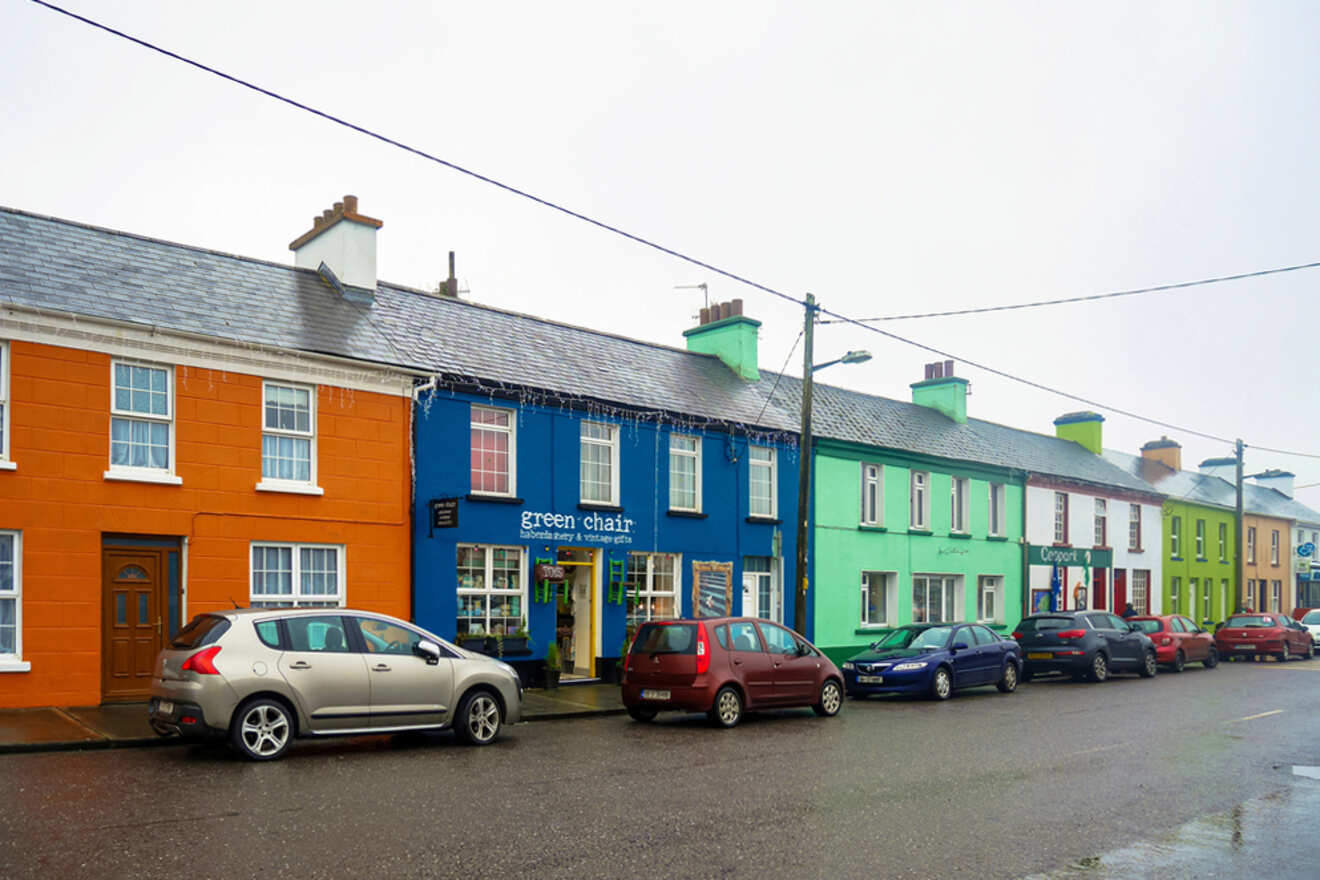
You must pay for parking in many places in the country, especially during the day. On-street parking (marked with a parking sign) is free on Sundays and during the week after 18:30, but be sure to check the parking sign for every specific place.
Parking in Dublin, Belfast, and other busy areas can get pretty expensive. There are different zones in the city indicated by the color strip on the street sign, and the prices are as follows:
- Yellow zone: €4 per hour
- Red zone: €3.5 per hour
- Green zone: €2 per hour
- Orange zone: €1.20 per hour
- Blue zone: €0.90 per hour
Apps like Waze do a great job of helping you find the most affordable parking!
As for paying for parking, you can pay using Pay and Display. Just pay at the parking machine and show your ticket on the windscreen.
They also have the Parking Tag system for people who use on-street parking frequently. You can set up an account, top it up with a desired amount, and use it to pay for parking via phone, SMS, or the app. All details are available on the official website.
5. Additional fees when renting a car in Ireland
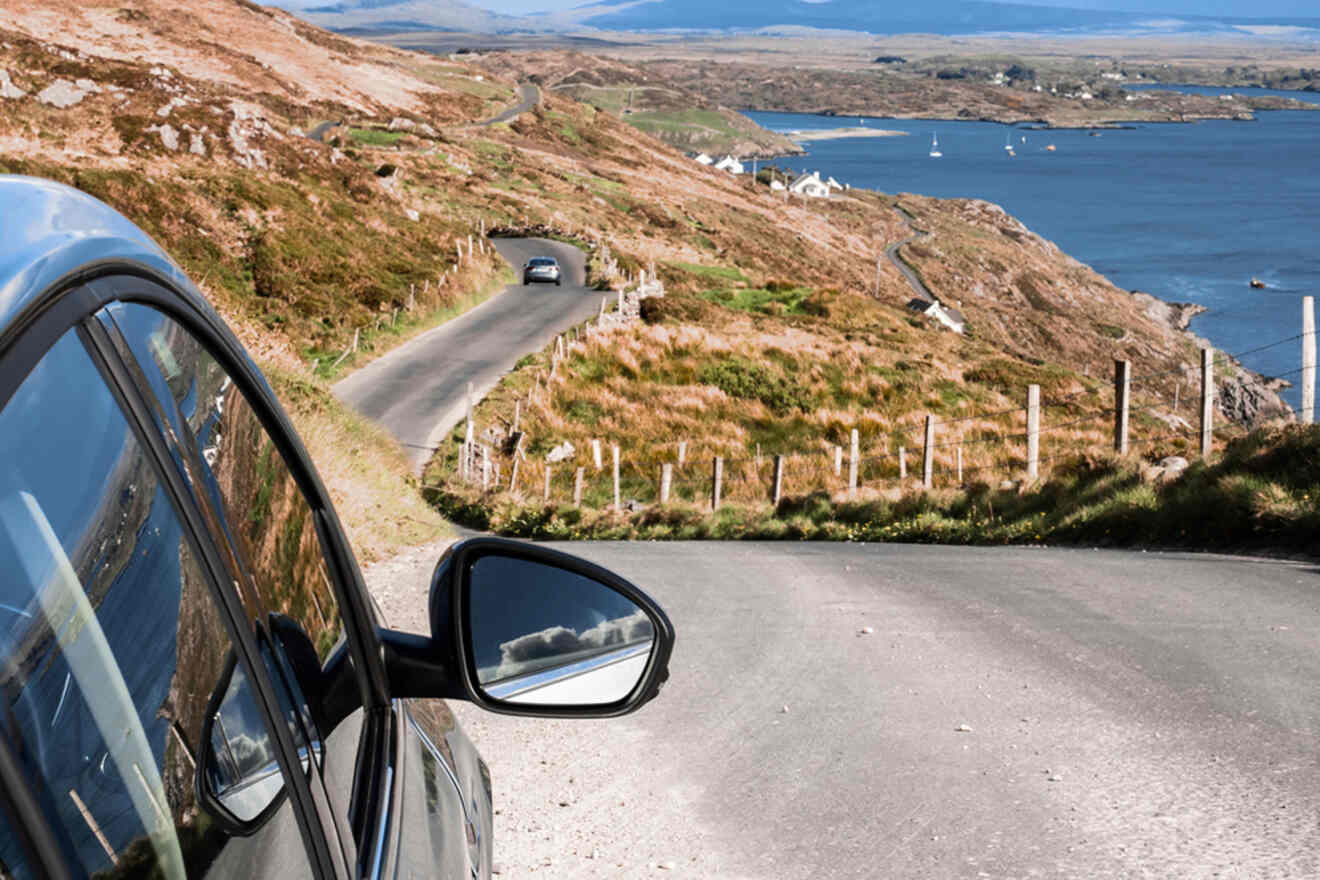
Renting a car in Ireland comes with additional fees that you should be aware of. Some of them can be:
- Insurance
- GPS
- Second driver
- One way rental
- Child seat
- Fuel tank if you return not full
- Extra mileage
- Young/senior driver fee
6. Road quality in Ireland
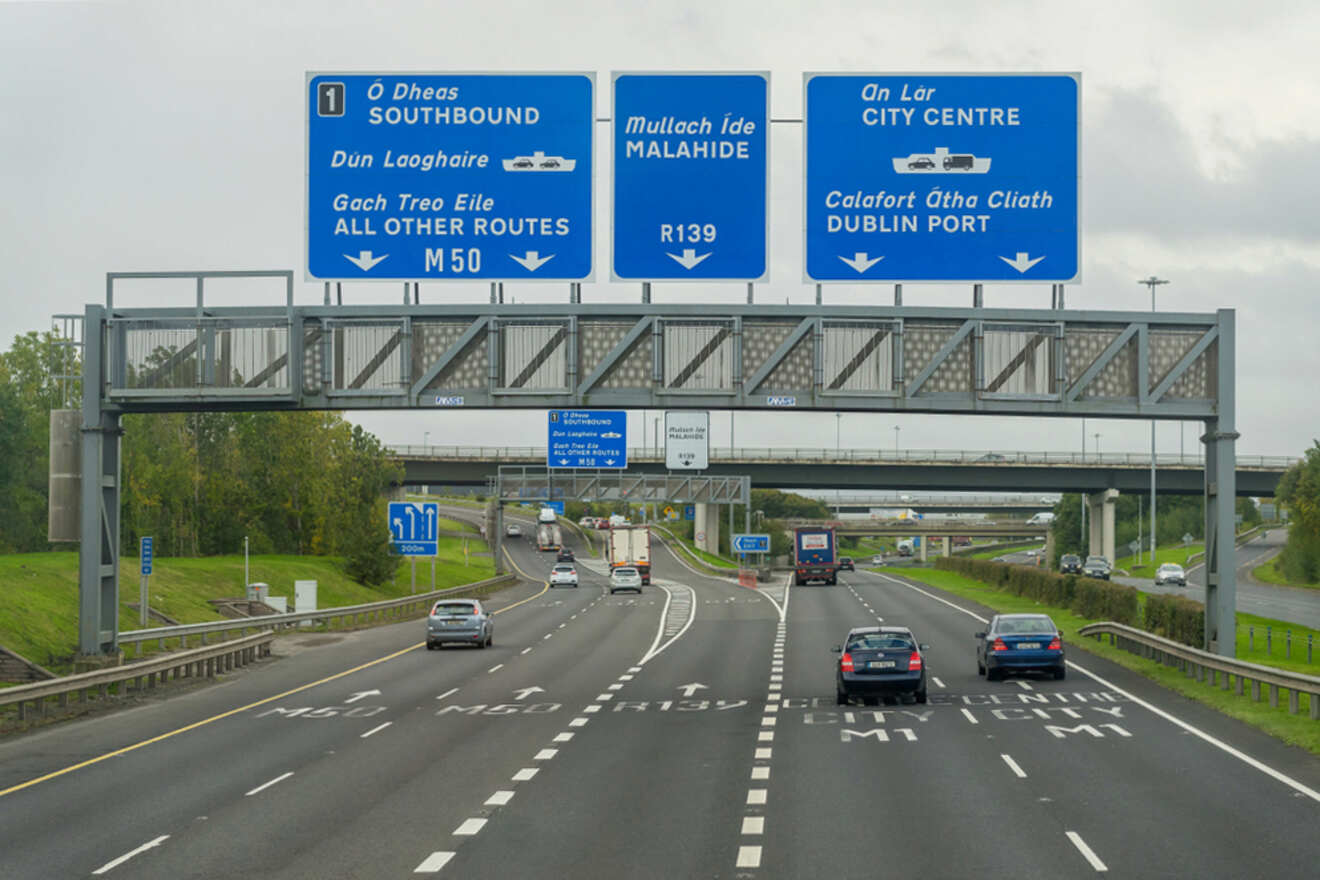
Overall, we had a pleasant time driving across Ireland. I can’t speak for the whole country, but we drove across Dublin, Limerick, Belfast, County Meath, and Bray, and we only ran into a couple of potholes on our way back from Limerick, but this wasn’t the main road by any means!
The main roads are clean and free of potholes, and the only issue you need to be aware of is animals on the road. I saw more than one instance of roadkill, with more of them being common in the farmlands and mountains. The city areas are better in this regard.
Remember that they drive on the left side in Ireland and there are quite a few one-ways in the cities! The last thing you want is to be caught driving on the wrong side or the wrong way – trust me, I made this mistake!
Finally, I was pleasantly surprised by how decent the local drivers are. They don’t use the fast lane on the highway unless they’re going really fast! Of course, this isn’t the case when there’s traffic.
And if you’re looking for a scenic ride in Ireland, I highly recommend The Ring of Kerry! It’s my absolute favorite drive and is filled with breathtaking views of the greenery and untouched nature. It’s a perfect explanation for why Ireland is known as the Emerald Isle!

Waze is popular in Ireland, and we used it a lot to find parking spots.
You can also use Google Maps for navigation. I highly recommend downloading offline maps with all the potential routes you may use. Here’s a short YouTube video explaining how to do this. When you have an offline map of the area you plan to explore, you’ll make sure you can get directions even if there’s no signal or you run out of data! I ran out of data, and having offline map data saved me from being lost at night in the middle of Swords.
8. Things to check when you receive your rental car
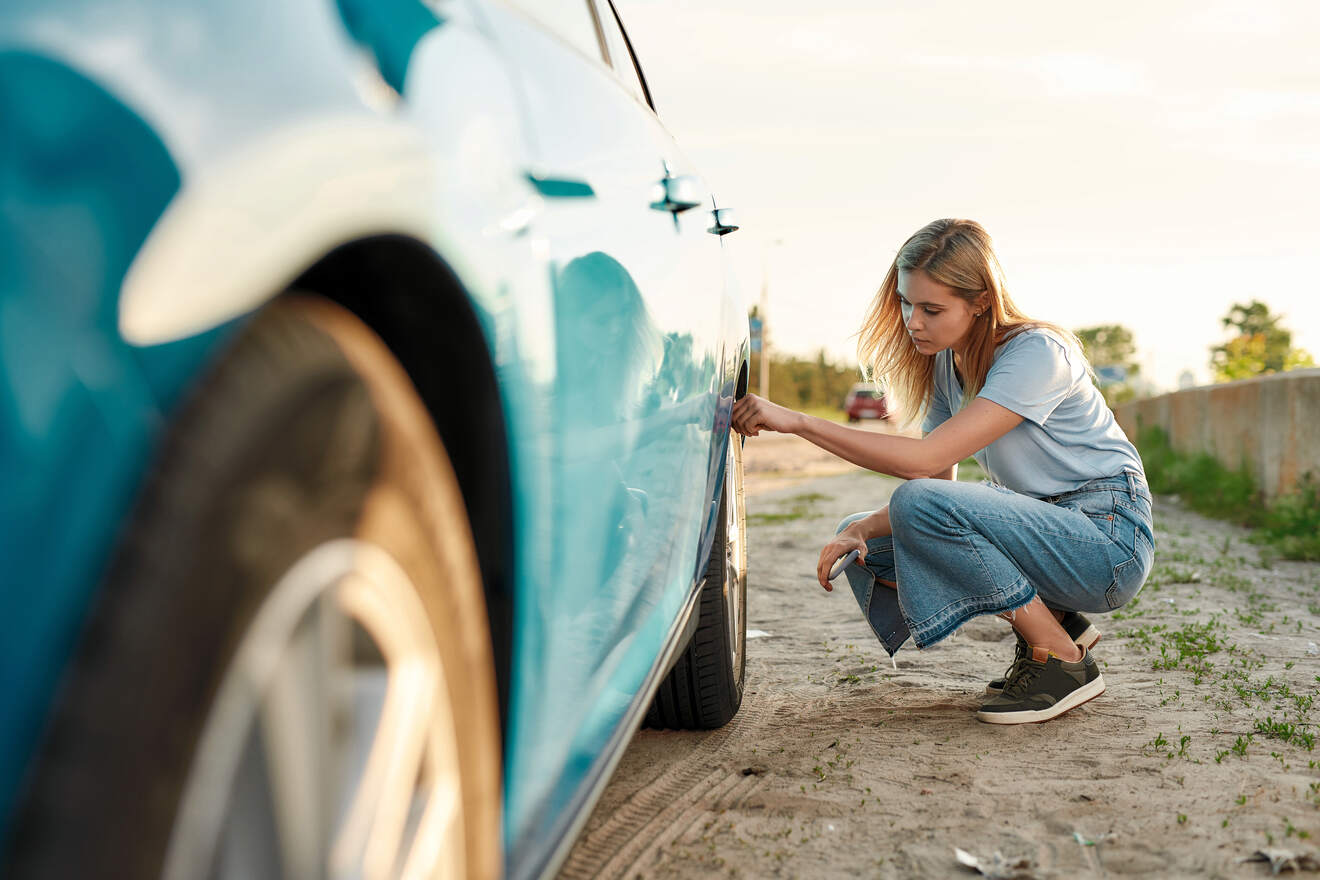
Now, before I wrap up the article, I want to share some practical tips on what to do when you pick up your rented car. I’m all in for precaution and being rather safe than sorry, so just take a couple of minutes to check these off the list before starting your Ireland adventure:
- Check for the damages (take pics and videos). If the lighting is bad in the car, use your flashlight. It’ll show the people from the car rental company that you’re serious about the car.
- Check the documents inside the vehicle and make sure you have the number to call in case of an accident.
- Check the condition of the car from the inside. Is the AC working? Is your phone connecting for music or navigation? Is the tank full as promised?
- For winter trips: Do you have winter tires? Is your spare tire good?
- Make sure you have all the necessary documents (passport, cards) if crossing the border with Northern Ireland.
NOTE: I highly recommend returning your car during working hours. This way, you’ll make sure the people at the rental company confirm there is no damage to the vehicle. Just avoid the morning and afternoon rush so you’re not stuck in traffic!
9. Campervan hire in Ireland

A few campervan rental companies are available in Ireland. Bunk Campers, McRent, and Indie Campers are some of the most popular ones.
If the roads in the country were just a bit wider and cities more campervan-friendly, I’d even consider renting one myself. However, after driving a regular car in the country, I can see how campervans can cause difficulties in urban spaces.
If you are planning only to explore the countryside, then I recommend renting a campervan. The peak season for campervan rentals is from May to September. The sooner you book your van, the better.
On average, you can expect to pay around €140 per day. Most companies have flexible plans where you can make changes to your reservation without paying extra.€
| 🚗 Economy car: | €50 |
| 🚜 4×4 price: | €80 |
| 🚐 Campervan price: | €140 |
| 🧍 Driving age: | from 25 |
| ⛽ Gas price: | €1.7 per l. |
| 🚙 Top rental company: | Rentalcars |
FAQs about renting a car in Ireland
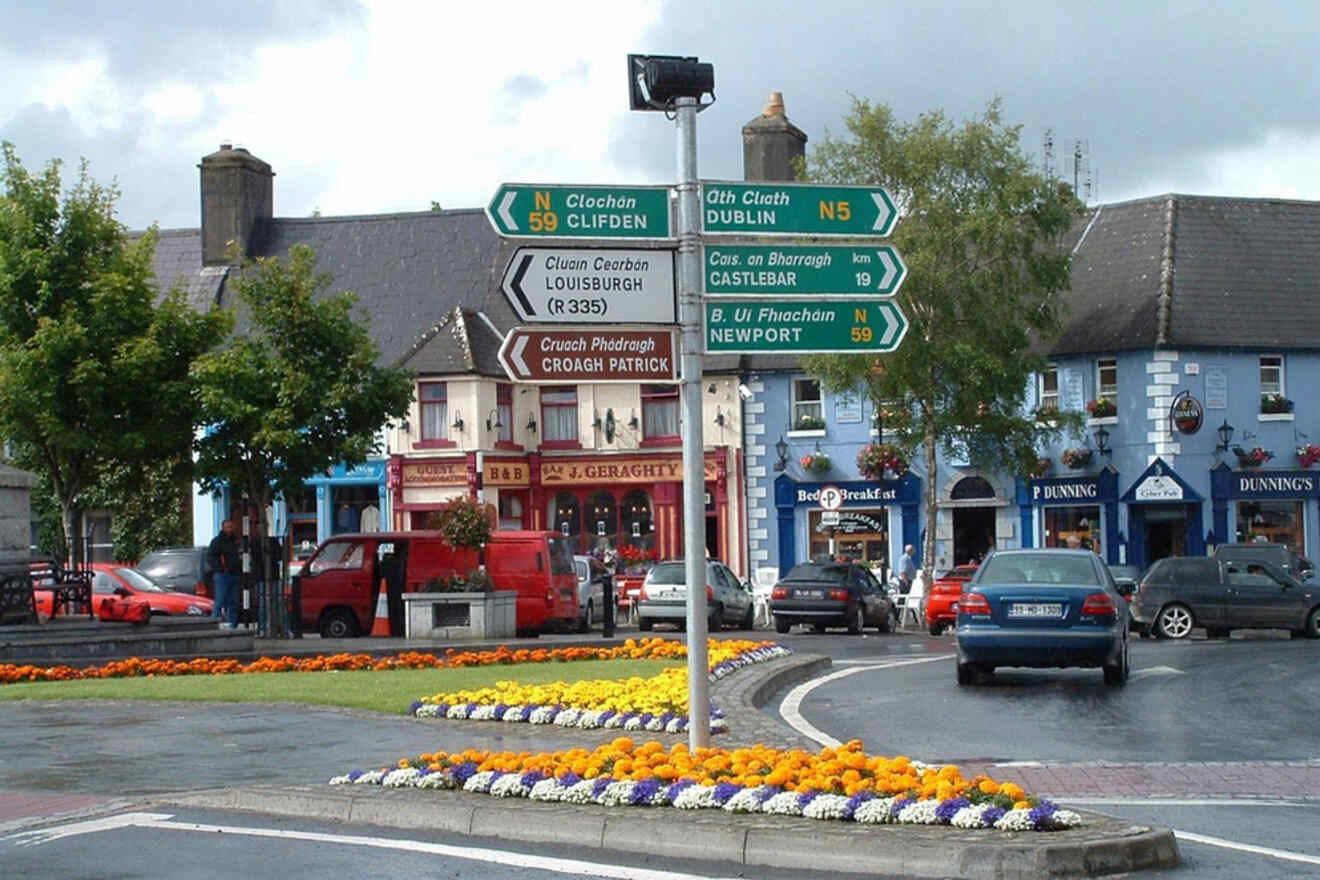
✅ Is it safe to rent a car in Ireland?
Yes, Ireland is one of the safest countries in Europe, and it’s perfectly safe to rent a car here. Both security and safety are on a high level, including road safety.
🚗 What are the advantages of renting a car in Ireland?
You’ll have more flexibility to travel at your own pace, visit secluded, off-road attractions, and, most importantly, independence – you won’t have to rely on buses and taxis to get around.
🪪 What do you need to rent a car in Ireland?
You need a valid license in English (if the writing isn’t available in English, you’ll have to provide an international driver’s permit) and a credit card when renting a car in Ireland.
📃 Do I need insurance to rent a car in Ireland?
Yes, you must get at least limited liability insurance for your rental car, as it’s a legal requirement. Most companies will require you to also have extra insurance to rent a car in Ireland, especially if you plan to drive to Northern Ireland.
🇬🇧 Can I rent a car in Ireland and drive to Northern Ireland?
Yes! That’s exactly what I did. You will have to pay for extra insurance, but other than that, you can drive to Northern Ireland without issues with your rental car.
💳 Can I hire a car in Ireland without using a credit card?
Many Ireland car rental companies allow UK residents to rent a car using a debit card, but residents from other countries must use a credit card.
Conclusion
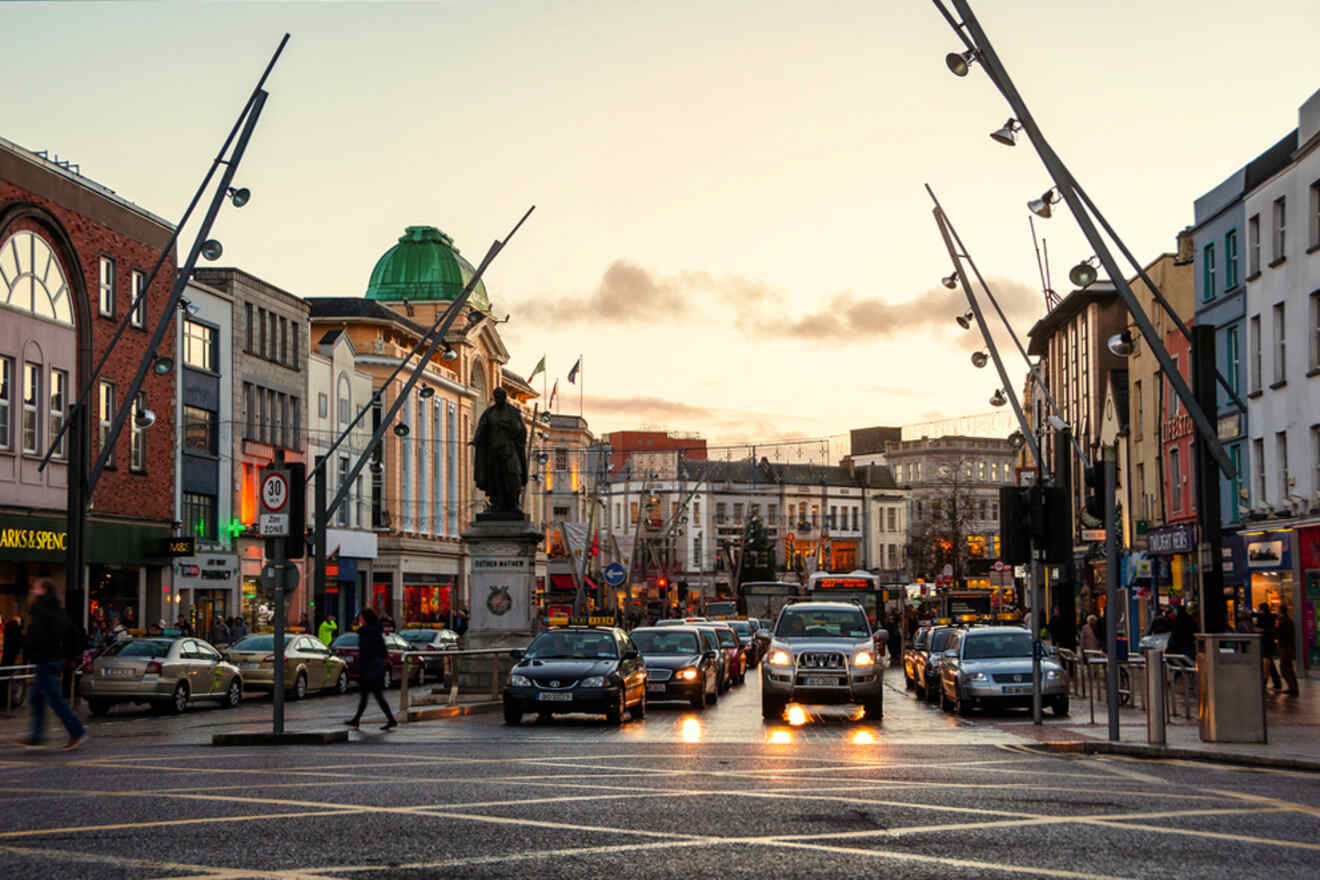
Hopefully, my detailed Ireland car rental guide has helped you understand what it takes to rent a car and what you can expect from your trip! I definitely recommend renting a car in Ireland after having had the chance to enjoy this beautiful country on four wheels myself. It’s definitely the best travel decision I made in Ireland!
Drop me a comment below if you have any questions or would like to add something about Irish car rental companies, rental cars, or the overall experience. I’ll be quick to answer!
Safe travels,
Kathryn
Pin it for later!

Pin it for later!


 Kathryn Donoghue
Kathryn Donoghue 







This site is protected by reCAPTCHA and the Google Privacy Policy and Terms of Service apply.